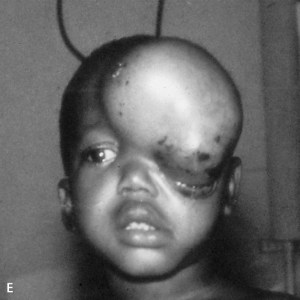Epstein-Barr virus |
Epstein-Barr virus, is a member of the herpesvirus family and one of the most common human viruses. The virus occurs worldwide, and most people become infected with EBV sometime during their lives.
Named after M. A. Epstein British pathologist, and Y. M. Barr British virologist, who isolated the virus in 1964.
Many children become infected with EBV, and these infections usually cause no symptoms or are indistinguishable from the other mild, brief illnesses of childhood.
When infection with EBV occurs during adolescence or young adulthood, it causes infectious mononucleosis 35% to 50% of the time.
Symptoms of infectious mononucleosis are fever, sore throat, and swollen lymph glands. Sometimes, a swollen spleen or liver involvement may develop. Heart problems or involvement of the central nervous system occurs only rarely, and infectious mononucleosis is almost never fatal. There are no known associations between active EBV infection and problems during pregnancy, such as miscarriages or birth defects. Although the symptoms of infectious mononucleosis usually resolve in 1 or 2 months, EBV remains dormant or latent in a few cells in the throat and blood for the rest of the person’s life. Periodically, the virus can reactivate and is commonly found in the saliva of infected persons. This reactivation usually occurs without symptoms of illness.
A late event in a very few carriers of this virus is the emergence of Burkitt’s lymphoma and nasopharyngeal carcinoma, two rare cancers. EBV appears to play an important role in these malignancies, but is probably not the sole cause of disease.
Transmission of EBV requires intimate contact with the saliva (found in the mouth) of an infected person. Transmission of this virus through the air or blood does not normally occur. The incubation period, or the time from infection to appearance of symptoms, ranges from 4 to 6 weeks. Persons with infectious mononucleosis may be able to spread the infection to others for a period of weeks. However, no special precautions or isolation procedures are recommended, since the virus is also found frequently in the saliva of healthy people. In fact, many healthy people can carry and spread the virus intermittently for life. These people are usually the primary reservoir for person-to-person transmission. For this reason, transmission of the virus is almost impossible to prevent.
Burkitt’s Lymphoma
It is a form of lymphoblastic B cell non –Hodgkin’s lymphoma. It occurs predominantly in Tropical Africa and New Guinea, although it also occurs less frequently in other parts of the world.


There is strong evidence that Epstein-Barr virus plays important role in its development. The peak incidence is between the ages of 4-8 yrs.
This disorder affects mainly the mandible and maxillary bones.
This may cause marked bone deformity with loosening of teeth and if orbit is involved extrusion of the eye with loss of sight. Involvement of abdomen may occur with involvement of kidneys, adrenals, ovaries, and lymph nodes. Lesion in spinal cord may cause paraplegia. Bilateral tumors of breast may occur in young adult women.
Treated with Chemotherapy . Results particularly in African variety are good. Drug used is Cyclophosphamide 40-60mg /kg body wt every 2 wks.6 doses.
